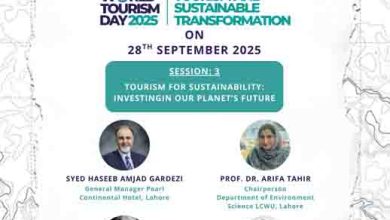Climate Crisis Fuels Pakistan’s Malaria Surge: WHO Warns of 2 Million+ Annual Cases
WHO and Pakistan warn that rising temperatures and floods are driving a malaria surge with over 2 million cases annually. Urgent action is needed to prevent further outbreaks.
Climate change malaria Pakistan is now more than just a theoretical concern—it’s a deadly and growing reality. With over 2 million annual cases, Pakistan is witnessing an alarming spike in malaria, made worse by rising temperatures, increasing floods, and inadequate healthcare in vulnerable regions. On the occasion of World Malaria Day 2025, the World Health Organization (WHO) and Pakistan’s Ministry of National Health Services have issued a joint statement highlighting how climate change is accelerating the malaria crisis.
Pakistan and WHO Sound the Alarm
On 24 April 2025, a day before World Malaria Day, WHO and Pakistan jointly warned that the country is facing an escalating public health emergency. This comes amid over 2 million malaria cases reported annually, with climate change acting as a key driver.
“Malaria is a major global threat, and we are seeing firsthand how climate change is increasing both the risk and the cases in our country,” said Federal Health Minister Syed Mustafa Kamal. “It is not just a health imperative – it is an investment in a healthier, more equitable, safer, and more prosperous future.”
This urgent call aligns with WHO’s global theme for the year: “Reinvest, Reimagine, Reignite.” Stakeholders are encouraged to join the Big Push to End Malaria and support vulnerable countries like Pakistan before the situation worsens further.
Climate Change and Malaria: A Dangerous Connection
The Science Behind the Surge
According to WHO data, climate change malaria Pakistan is a growing concern due to various environmental factors:
-
Rising Temperatures create favorable conditions for mosquito breeding.
-
Floods and Standing Water after heavy rains and monsoons expand mosquito habitats.
-
Humidity increases mosquito survival and reproduction rates.
These changes directly affect malaria transmission rates in Pakistan’s 80 endemic districts, where over 5,575 medical facilities track and treat cases. Data shows a consistent upward trend linked to both climate and socioeconomic factors.
2022 Floods and the Malaria Explosion
The catastrophic floods of 2022 acted as a turning point for malaria outbreaks in Pakistan:
-
6.6 million additional malaria cases were reported from 2022 to 2024.
-
In 2023, Pakistan recorded 2.7 million cases, compared to just 399,097 in 2021—a 577% increase.
This not only strained the national health system but also increased the overall burden in the WHO Eastern Mediterranean Region, which saw 10.2 million cases in 2023, up 137% from 2015.
Efforts and Achievements in 2024
Despite these challenges, Pakistan has made significant strides in malaria prevention and treatment:
✅ 11.4 million suspected malaria cases screened
✅ 2 million confirmed patients treated
✅ 7.8 million insecticide-treated bed nets distributed across 22 high-burden districts
✅ Malaria cases reduced from 2.7 million in 2023 to 2 million in 2024
These achievements were possible due to strong collaboration with WHO and financial support from the Global Fund to Fight HIV, TB, and Malaria.
“We have proven that investing in malaria response saves lives,” said Dr. Dapeng Luo, WHO Representative in Pakistan. “But climate change is hampering progress, posing a threat not only for Pakistan but for the region and the world.”
Call for Global Action
The malaria surge in Pakistan is a warning sign for the world. WHO is urging governments, NGOs, and the private sector to:
-
Increase investments in malaria prevention and treatment.
-
Adapt strategies to new climate realities.
-
Prioritize vulnerable regions, especially those affected by poverty and poor infrastructure.
Regions like Balochistan, Khyber Pakhtunkhwa, and Sindh are particularly at risk due to deteriorating security, limited healthcare access, and economic hardship.
“We know how to end malaria,” Dr. Luo emphasized. “But it will only happen if we work together and adapt to the new risks posed by climate change.”
Conclusion: A Health Crisis with Global Implications
The connection between climate change and malaria in Pakistan is no longer theoretical—it is an unfolding reality. Over 2 million annual cases, worsened by environmental and structural challenges, make it clear that urgent and coordinated action is needed.
Ending malaria in Pakistan is not just a national priority—it is a regional and global responsibility. The time to act is now.
Helpful Links & Resources







